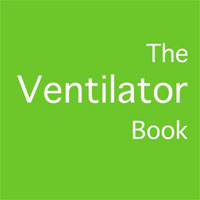Tag: ventilation
Effect of High-Dose Baclofen on Agitation-Related Events Among Patients With Unhealthy Alcohol Use Receiving Mechanical Ventilation
Among patients with unhealthy alcohol use receiving mechanical ventilation, treatment with high-dose baclofen, compared with placebo, resulted in a statistically significant reduction in agitation-related events. The primary... read more
Chloroquine/Hydroxychloroquine for Treating or Preventing COVID-19 Infection
When given along with azithromycin, hydroxychloroquine increased the risk of any unwanted effects, but made no difference to the risk of serious unwanted effects (1 study; 444 people). Compared with lopinavir plus ritonavir,... read more
Antiviral Drugs in Hospitalised COVID-19 Patients
These remdesivir, hydroxychloroquine, lopinavir, and interferon regimens had little or no effect on hospitalized patients with Covid-19, as indicated by overall mortality, initiation of ventilation, and duration of hospital... read more
Temporal Changes in the Epidemiology, Management, and Outcome from ARDS
The frequency of and outcome from ARDS remained relatively stable between 2002 and 2012. Plateau pressure > 29 cmH2O and driving pressure > 14 cmH2O on the first day of mechanical ventilation but not tidal volume > 8... read more
Physiological dead space and alveolar ventilation in ventilated infants
Prematurely born infants with pulmonary disease have a higher dead space than term controls, which may influence the optimum level during volume-targeted ventilation. A prospective study of mechanically ventilated infants... read more
Innovations in ICU Ventilation
Many centuries ago, Socrates stated that "the secret of change is to focus all of your energy, not on fighting the old, but on building the new." Nowadays, we may relate his quote with the concept of innovation, which is... read more
Haloperidol, Clonidine and Resolution of Delirium in Critically Ill Patients
Haloperidol and clonidine use in delirious ICU patients may be associated with reduced probability of delirium resolution. This finding, however, merits further investigation given inherent limitations of this observational... read more
COVID-19 and VILI: Mechanical Power Measurement
The COVID-19 pandemic has increased the need for a bedside tool for lung mechanics assessment and ventilator-induced lung injury (VILI) monitoring. Mechanical power is a unifying concept including all the components which... read more
Nebulised heparin for patients with or at risk of ARDS
In patients with or at risk of acute respiratory distress syndrome (ARDS), nebulised heparin did not improve self-reported performance of daily physical activities, but was well tolerated and exploratory outcomes suggest... read more
Association between the BMI and outcomes of patients resuscitated from OHCA
The body mass index (BMI) was not independently associated with favourable neurologic and survival outcomes of patients surviving from out-of-hospital cardiac arrest (OHCA). Nine hospitals were enrolled; finally, 605 patients... read more
Bacterial Superinfection Pneumonia in COVID-19 Respiratory Failure
Severe community-acquired pneumonia secondary to SARS-CoV-2 is a leading cause of death. Current guidelines recommend patients with SARS-CoV-2 pneumonia receive empirical antibiotic therapy for suspected bacterial superinfection,... read more
Pre-hospital critical care management of severe hypoxemia in victims of COVID-19
Patients with Covid-19 and severe hypoxemia may pose a considerable challenge for the pre-hospital emergency medical services. Intubation may be associated with a high risk of complications in these patients and should be... read more
Adverse Events in the ICU During Bed-Bath Procedures
Serious adverse events were observed in one-half of patients and concerned one-fifth of nurses, confirming the need for caution. Further studies are needed to test systematic serious adverse event prevention strategies. The... read more
A Novel Negative Pressure-Flow Waveform to Ventilate Lungs for Normothermic Ex Vivo Lung Perfusion
Ex vivo lung perfusion (EVLP) is increasingly used to treat and assess lungs before transplant. Minimizing ventilator induced lung injury (VILI) during EVLP is an important clinical need, and negative pressure ventilation... read more
Medical officials use new tool for COVID patients
The Barren-Metcalfe County Emergency Medical Service will soon implement a new medical device that will benefit COVID-19 patients as well as emergency medical personnel. The medical device, the Sea-Long helmet, is a clear,... read more
Extracorporeal Membrane Oxygenation for COVID-19
The coronavirus disease 2019 (COVID-19) pandemic has placed extraordinary strain on global healthcare systems. Use of extracorporeal membrane oxygenation (ECMO) for patients with severe respiratory or cardiac failure attributed... read more
Time-Controlled Adaptive Ventilation Versus Volume-Controlled Ventilation in Experimental Pneumonia
In the model of pneumonia used herein, at the same tidal volume and mean airway pressure, time-controlled adaptive ventilation, compared with volume-controlled ventilation, was associated with less lung damage and bacteremia... read more
The Ventilator Book
If you need something that teaches you both the concepts of mechanical ventilation and how to manage patients with respiratory failure, this is the book for you. The Ventilator Book is written to be read in the ICU or Emergency... read more

Weaning the patient: between protocols and physiology
Ventilator weaning forms an integral part in critical care medicine and strategies to shorten duration are rapidly evolving alongside our knowledge of the relevant physiological processes. The purpose of the current review... read more
Clinical characteristics of critically ill patients with COVID-19
In this study of critical patients infected by SARS-CoV-2 in a high-complexity hospital, the majority were comorbid elderly men, a large percentage required invasive mechanical ventilation, and ICU mortality was 25%. Design... read more
Lung ventilation distribution in patients after traditional full sternotomy and minimally invasive thoracotomy
The aim of the study was to examine the post-operative ventilation distribution changes in cardiac surgical patients after traditional full sternotomy (FS) or minimally invasive thoracotomy (MIT). A total of 40 patients... read more
What’s new about pulmonary hyperinflation in mechanically ventilated critical patients
Pulmonary hyperinflation is the increase in the relaxation volume of the respiratory system at the end of a tidal expiration (end-expiratory volume). This can occur due to a number of factors, acting alone or in combination,... read more









